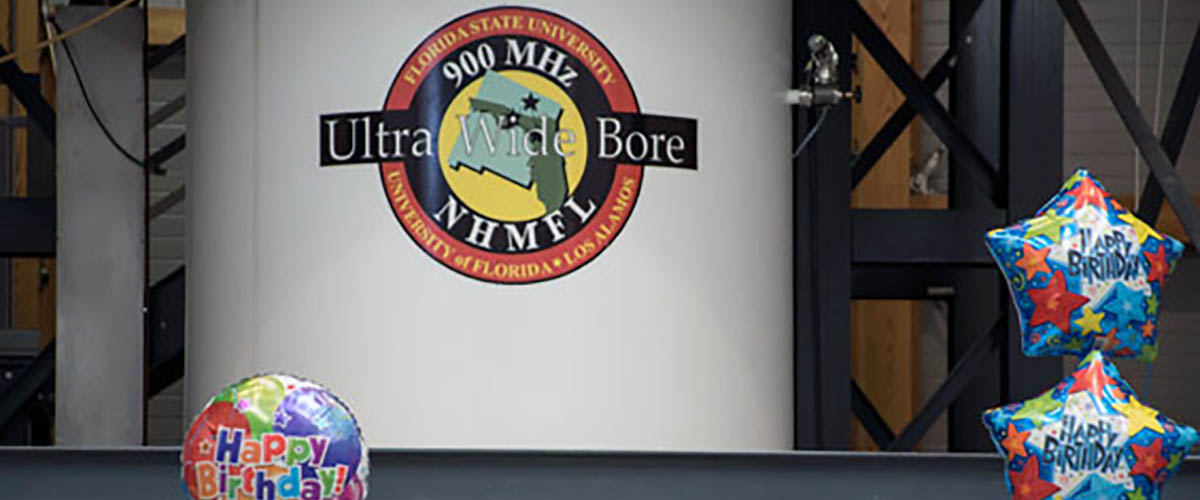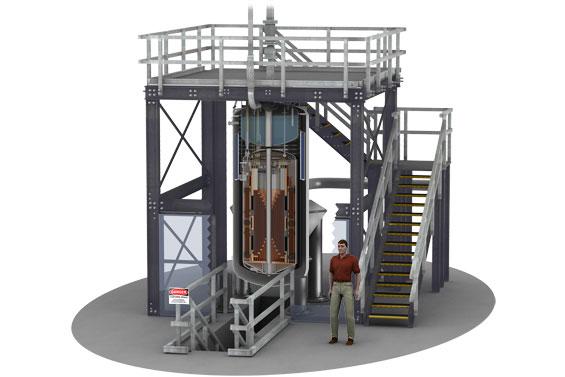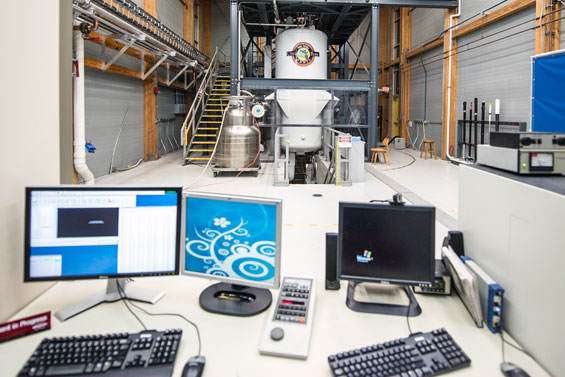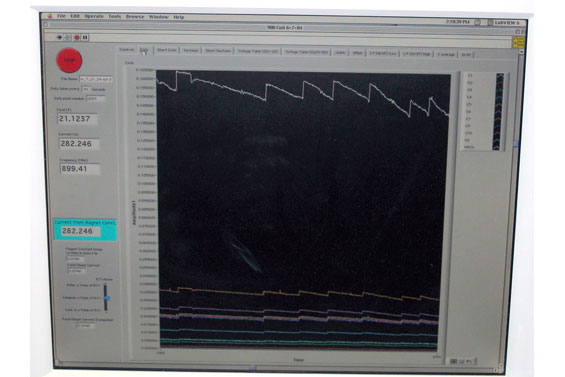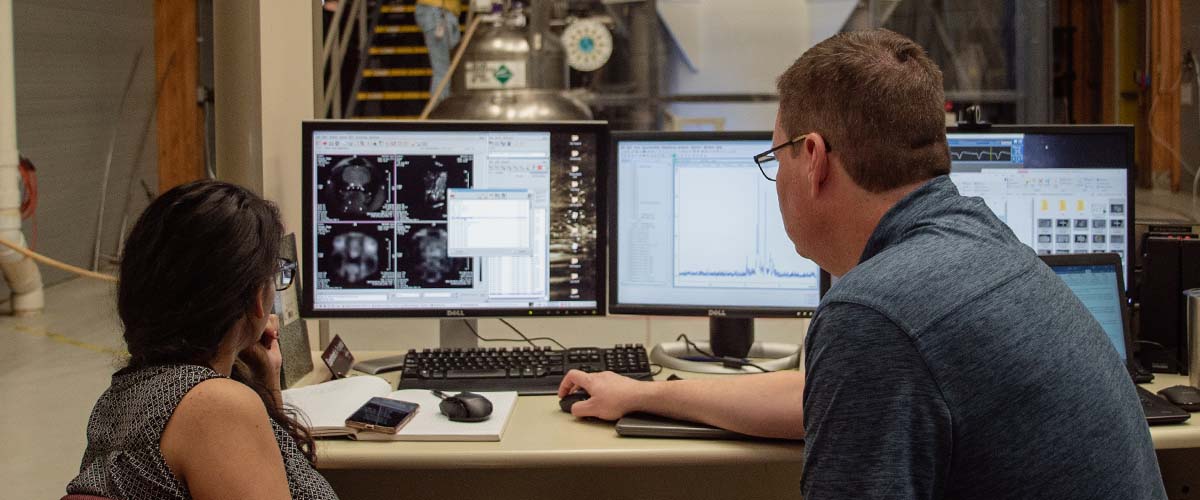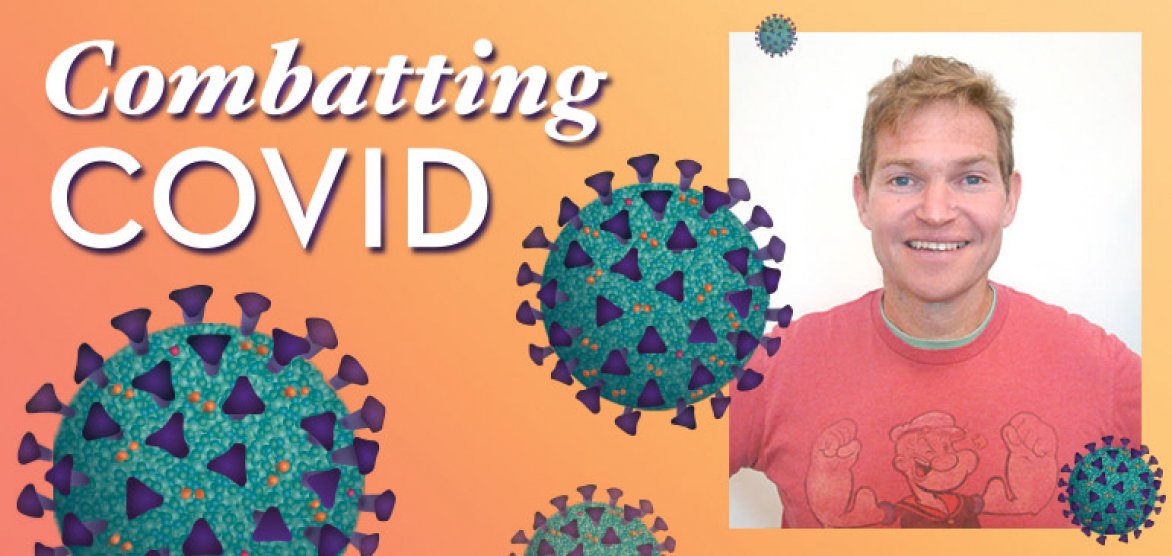The MagLab commissioned its very own 900 MHz ultra-wide-bore nuclear magnetic resonance (NMR) magnet in 2004. Designed and built by the lab and boasting a field of 21.1 tesla x Tesla, or T, is a unit of magnetic field strength; a strong refrigerator magnet is .01 tesla, and a typical MRI machine is 1.5 to 3 tesla. The MagLab's strongest persistent magnet has a field of 45 teslas. , the instrument was (and remains) a record-setting, engineering marvel that promised to deliver ground-breaking science. The magnet's announcement made a big media splash, from National Public Radio to the Late Show with David Letterman
"The 900," as it is fondly called around here, has been operational for more than a decade and has not disappointed. In a nod to its famous and funny fan, we share this “top 10” list of the coolest things most people don't know about the magnet.
Top 10 cool things about the 900
10. It's green! The magnet must be kept at extremely cold temperatures, made possible by a steady supply of liquid helium. Most of it is recycled, thanks to a customized system that captures the helium that “boils off” into gas and recycles it into a fresh batch of liquid helium.
9. It works from anywhere! Thanks to technology and our expert staff, scientists don't have to be present to run experiments. Far-off scientists can send in samples that MagLab scientists then load into the magnet. The off-site scientist can then control the experiment from home and monitor data, or request MagLab staff to run the experiment for them. Our scientific staff provides as much or as little help as they need.
8. It's very sensitive! Thanks to the magnet's homogeneity, high field and outstanding probes x Probes are essentially fancy sticks that scientists use to put their experiments inside the magnets. Probes can be quite complex and engineered to measure the materials in the magnet in powerful ways. Search this site for "Meet the Probes" to learn more. , the 900 generates the highest quality results for studies of membrane proteins, a rich area of biological research.
7. It's roomy! The experimental area within the magnet is wide enough to accommodate small animals, so scientists can use it for longitudinal studies that examine how a disease or drug treatment progresses over time.
6. It's inspirational! It has led to seven patents and fueled the design and manufacture of novel magnet probes.
5. It's got excellent vision. You might even say 21-21 vision! With its ability to pinpoint atomic nuclei in their native habitat, the 900 reveals the shapes and chemical properties of large biological molecules like proteins and nucleic acids.
4. It's versatile! The 900 does both Nuclear Magnetic Resonance (NMR) and Magnetic Resonance Imaging (MRI). Not only can the powerful magnet identify hydrogen in the body to create high-resolution MRI images; it can also identify other elements in the body, such as chlorine, sodium, carbon and phosphorous, that are less abundant but more biologically significant.
3. It's a superconducting magnet! Frst charged up in July 2004, this magnet has been running current through its superconducting wires ever since! For years, the 900 was the only persistent, superconducting user magnet built at the MagLab, but now a 32-tesla all-superconducting magnet is serving users and final design work is taking place for an NSF-funded 40-tesla superconducting instrument.
2. It's prolific! Experiments conducted in the magnet over the past decade have resulted in dozens of scientific publications, and the rate of publications has only increased over time. This includes important work on HIV/AIDS, Alzheimer's disease, stroke, cancer, influenza, tuberculosis and other health-related research.
1. It's not just the world's strongest MRI machine, it can even sing!! A typical hospital MRI machine has a field of 1-3 tesla, but this magnet reaches 21.1 teslas - a masterpiece! And as if that's not enough, the magnet can even make music! Listen to its special rendition of "Happy Birthday" in the video below.



